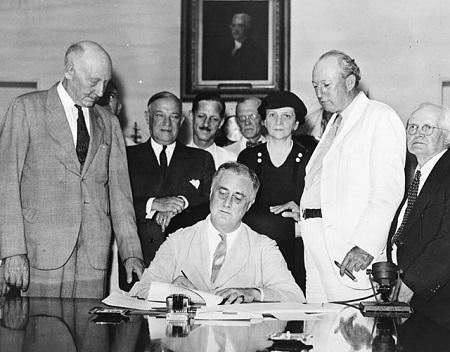The Social Security Act of 1935 provided federal funds to states to establish industrial programs that aimed to improve the safety and health of workers. These programs could include measures such as regular safety inspections, the development of safety standards and regulations, and the provision of training and education to workers on how to stay safe on the job.
The availability of these federal funds allowed states to invest more heavily in worker safety, which had a positive impact on the health and well-being of industrial workers. With more resources at their disposal, state governments were able to implement more effective safety measures and provide more comprehensive training to workers. This, in turn, helped to reduce the number of workplace accidents and illnesses.
1. Public Assistance
This was a federal-state program designed to provide assistance on the basis of need for persons over 65 years of age, dependent children and the needy blind. The Act outlined the program and prescribed certain standards which must be met if a state participated in the program. It also provided that the federal government would match state expenditures for these services. Direct administration was to be the responsibility of the states. The major decisions were to be made by the states. Each state would determine whether or not it would participate in the public assistance program and, if it wished to participate, would submit a plan to be approved by the Social Security Board. Within broad federal standards the state would determine who would receive assistance and how much each person would be granted. In the main, this was a typical federal-state cooperative pattern–already familiar in the agricultural, highway and health fields: federal policy, federal standards and federal financial participation; state operation, state administration and state matching of funds.
2. Unemployment Compensation
“Compensation” was the word the Act used because there had been some question of constitutionality in case the word “insurance” was used. Unemployment compensation, unlike public assistance which was paid for out of general revenue, was tied to a tax on employers. But here again, operation and administration within federal standards was in the hands of the states, although the entire cost of administration was to be paid by the federal government through a tax offset device.
3. Old-Age Insurance
Old-age insurance was established as a federal insurance program based on actuarial principles–federally administered and financed entirely by tax on employers and employees.
Overall, the Social Security Act of 1935 played a significant role in improving worker safety in industrial settings. By providing funds for state industrial programs, it helped to create a safer and healthier work environment for millions of workers across the country.
PRESIDENTIAL STATEMENT SIGNING THE SOCIAL SECURITY ACT. AUGUST 14,1935
Today a hope of many years’ standing is in large part fulfilled. The civilization of the past hundred years, with its startling industrial changes, has tended more and more to make life insecure. Young people have come to wonder what would be their lot when they came to old age. The man with a job has wondered how long the job would last.
This social security measure gives at least some protection to thirty millions of our citizens who will reap direct benefits through unemployment compensation, through old-age pensions and through increased services for the protection of children and the prevention of ill health.
We can never insure one hundred percent of the population against one hundred percent of the hazards and vicissitudes of life, but we have tried to frame a law which will give some measure of protection to the average citizen and to his family against the loss of a job and against poverty-ridden old age.
This law, too, represents a cornerstone in a structure which is being built but is by no means complete. It is a structure intended to lessen the force of possible future depressions. It will act as a protection to future Administrations against the necessity of going deeply into debt to furnish relief to the needy. The law will flatten out the peaks and valleys of deflation and of inflation. It is, in short, a law that will take care of human needs and at the same time provide the United States an economic structure of vastly greater soundness.
I congratulate all of you ladies and gentlemen, all of you in the Congress, in the executive departments and all of you who come from private life, and I thank you for your splendid efforts in behalf of this sound, needed and patriotic legislation.
If the Senate and the House of Representatives in this long and arduous session had done nothing more than pass this Bill, the session would be regarded as historic for all time.
Reference URL:
https://www.ssa.gov/history/fdrstmts.html#signing










